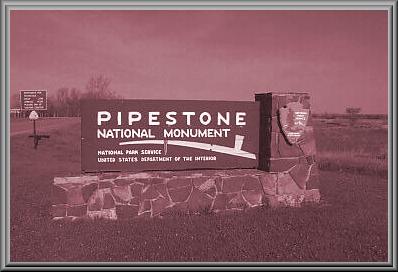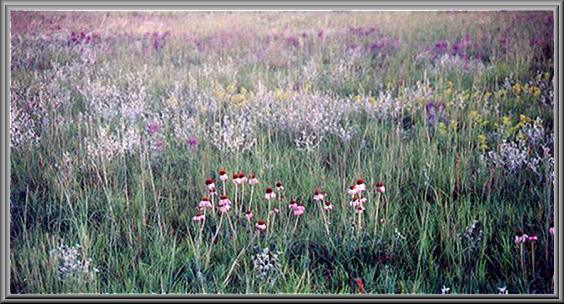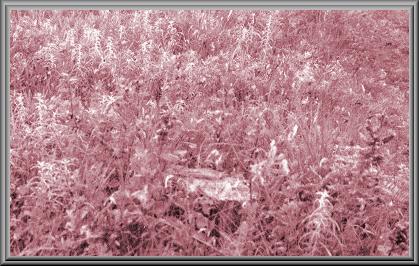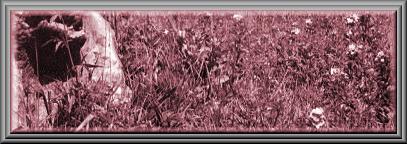The Little Feather Center - Quarrying Workshop
Quarrying for the Sacred Red Stone

|
"My
childhood days were so great, I remember taking the walk from my home
to the Pipestone National Monument about a mile away. I did this often,
it was like my playground, but there were no swings or slides or anything
that is common on a playground. Yet I spent much of my time at the
Sacred Quarry area. There was that certain something that kept me
going there." - Chuck Derby
|
The Monument
|
|
||
|
|
 A breath of reality....... the Prairie in 2000........ 'Millennium Edition' photo set by Chuck Derby |
 'Purple Prairie' 2000 |
|
"I
remember that my father would have a small shelter to provide some
shade for his work bench where he would carve his Pipes and other
articles. Visitors to the Monument would stop by and visit with him,
learning about quarrying and Pipe making. I would sit in awe listening
to him as he talked to the people, while at the same time he would
be carving a Pipe so that the visitors could actually see the process."
- Chuck Derby
|
 |
 |
 |
 |
 |
 |
 |
 |
All excerpts
by Chuck Derby are from his book 'Memories of Sacred Land Comtemporary
History of the Pipestone Quarry '
This site has been designed & implemented by Dragonfly
Dezignz
Hosted by the
following organizations
|
|



